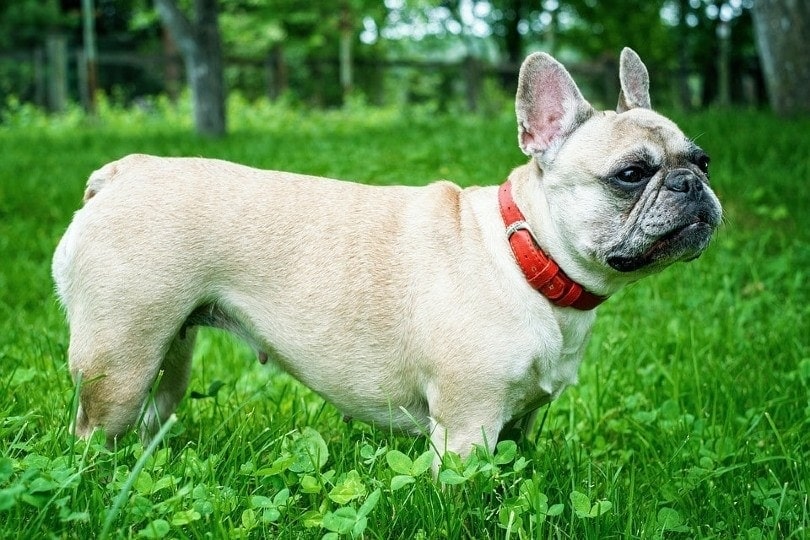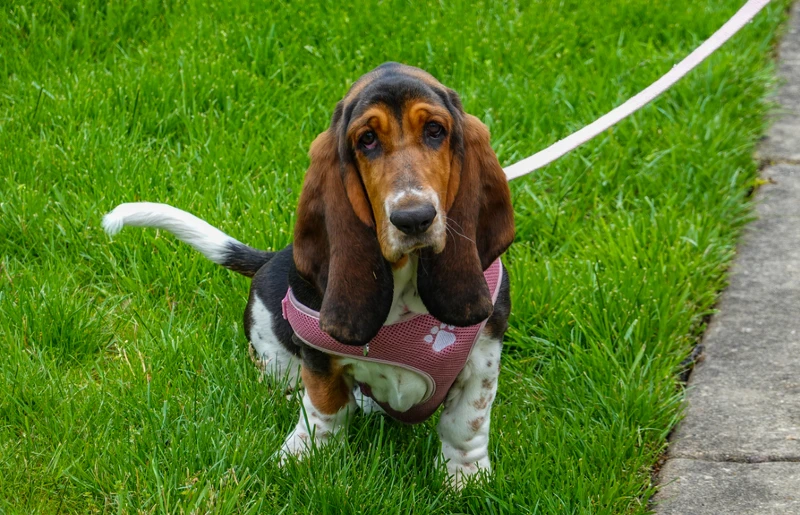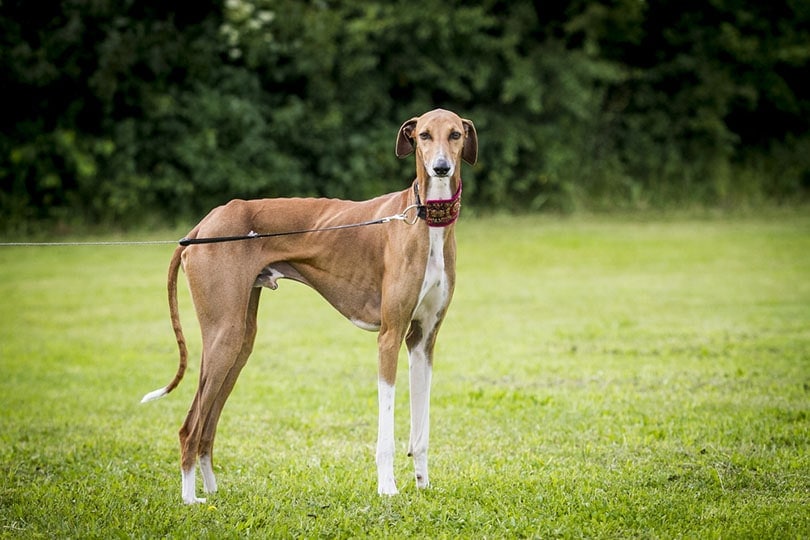What Kind of Dog Is Anubis? Ancient Egyptian History
By Kit Copson
Updated on
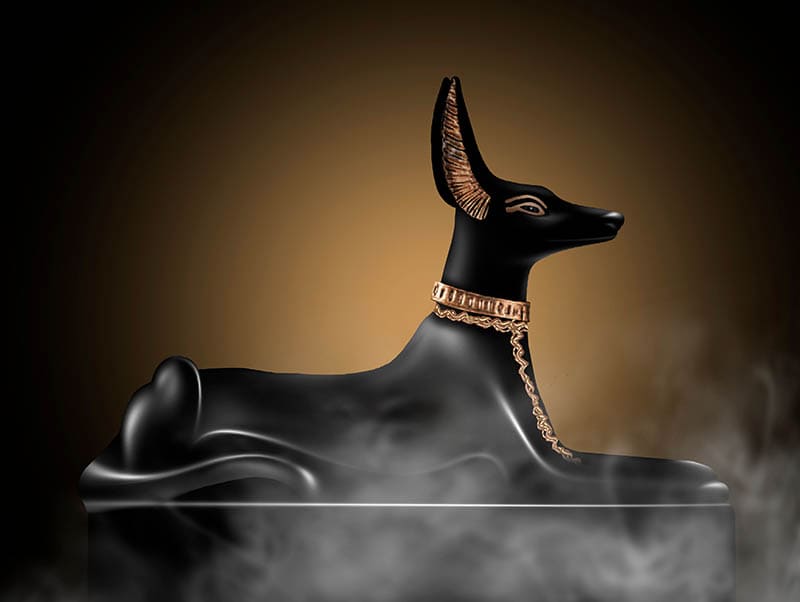
The domestication of dogs most likely began in the Pre-Dynastic Period, tens of thousands of years ago. Dogs’ importance to the ancient Egyptians both in regular society and as a god-like figure is illustrated in the numerous works of art they appear in, often depicted as Deities. The image of Anubis is thought to have been based on a Basenji, though it may have been inspired by other breeds.
In this post, we’ll explore what Anubis symbolizes, a dog’s role in ancient Egypt and ancient Egyptian religion, and share more about the history of the Basenji and other breeds that may have inspired Anubis’ image.
Dogs in Ancient Egypt
The ancient Egyptians placed great value on dogs and, as such, dogs played a major role in ancient Egyptian society. In addition to assisting hunters and guarding property, they were also kept as companion dogs. There’s even a tomb painting that depicts a man walking his dog—this painting dates back to around 3500 BC.
In addition, the dog’s image is shown herding cattle and wearing a collar in Egyptian art. The collar and leash were likely invented by the Sumerians. Sumer was a civilization in Mesopotamia and Sumerians are known for being highly innovative and creative people who made great advances in the fields of science, literature, art, archaeology, and language. The domestication of dogs began earlier in Sumer than it did in Egypt.
Ancient Egyptian dog breeds include the Basenji, Greyhound, Ibizan Hound, Pharaoh Hound, Saluki, Whippet, and Molossian.
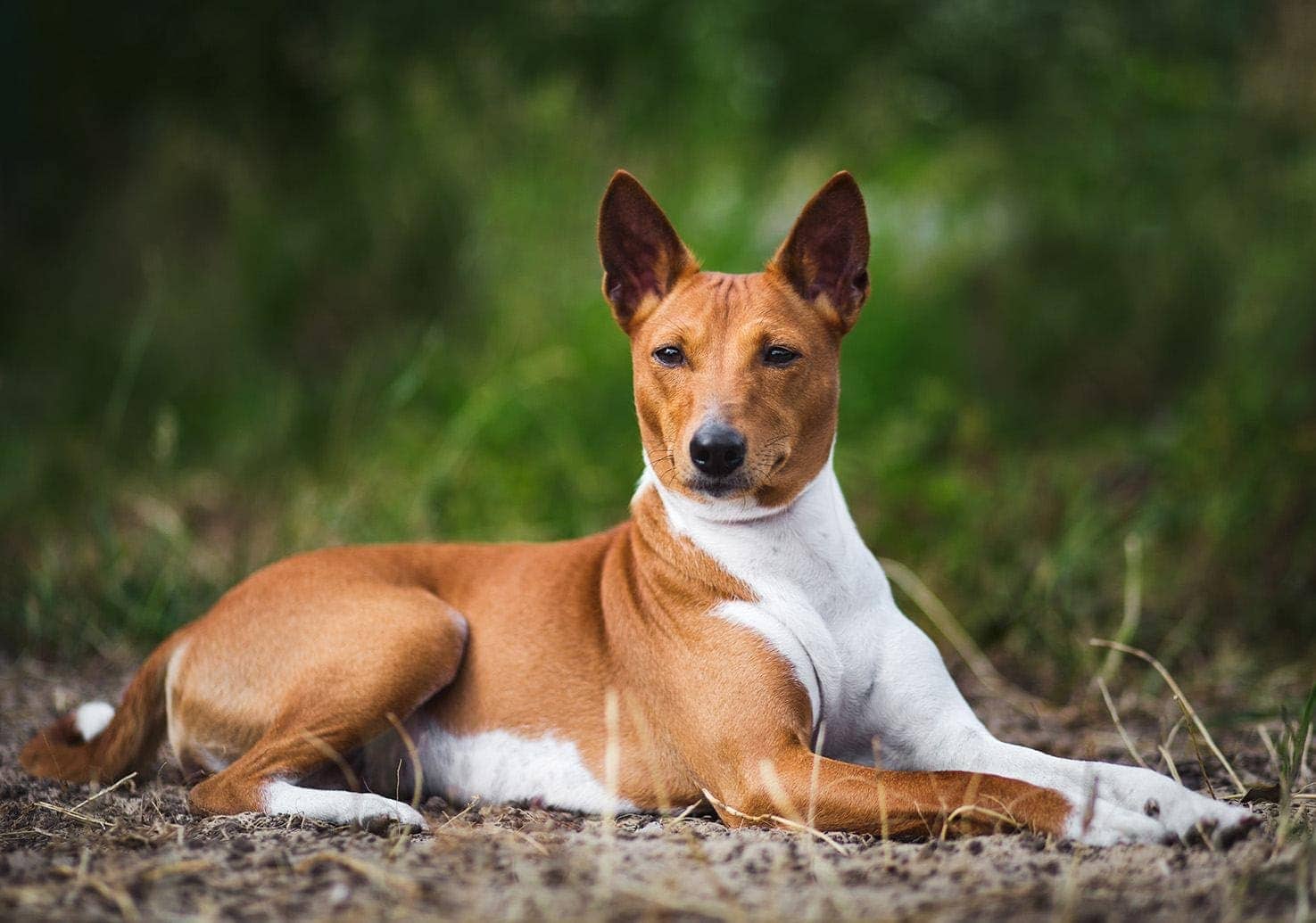
Who Is Anubis?
In ancient Egyptian religion, Anubis is a god of death, the underworld, the afterlife, tombs, cemeteries, and a guardian of graves. He is a jackal-headed figure with a human body and, though known to many as “the jackal dog”, ancient Egyptians simply referred to him as a dog—his epithet being “the dog who swallows millions”. That said, the ancient Egyptians did not view the jackal and dog as distinct from each other.
You can see Anubis’ image in many works of art, in which he is usually depicted mummifying the dead, wearing a ribbon or sash, and carrying a staff known as a “flail”. Ancient Egyptians deified jackals because they roamed cemeteries feasting on the remains of the dead. The Egyptians believed that by deifying jackals, they would instead protect the dead instead of eating them.
In addition to mummifying bodies, Anubis had another important task, which was to weigh hearts against the feather of truth. For the owner of the heart to successfully reach the afterlife, the heart had to weigh the same as the feather of truth.
What Breed of Dog Is Anubis?
Some historians consider Anubis to have been based on a Basenji, though he may have been inspired by the Ibizan Hound, Greyhound, or Pharaoh Hound.
Basenji
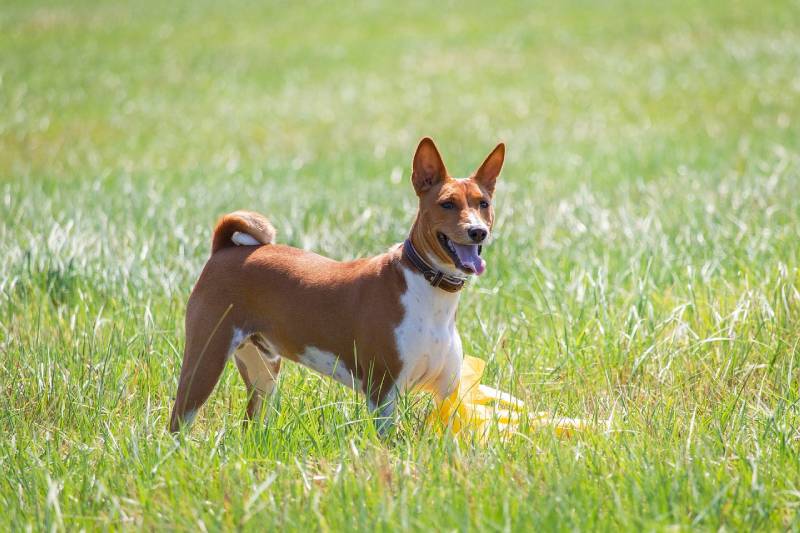
The Basenji likely originated in Nubia and is also known as the “barkless dog”. These hunting dogs are 16–17 inches tall and weigh between 22 and 24 pounds. They have short, shiny coats, curly tails, almond-shaped eyes, large and pointy ears, and a slender but sturdy, athletic build and long, slim legs.
Basenjis come in a variety of colors, though the AKC only recognizes four as standard—black and white, black tan and white, brindle and white, and red and white. Basenjis are very energetic dogs that make a yodeling sound instead of a bark.
Ibizan Hound
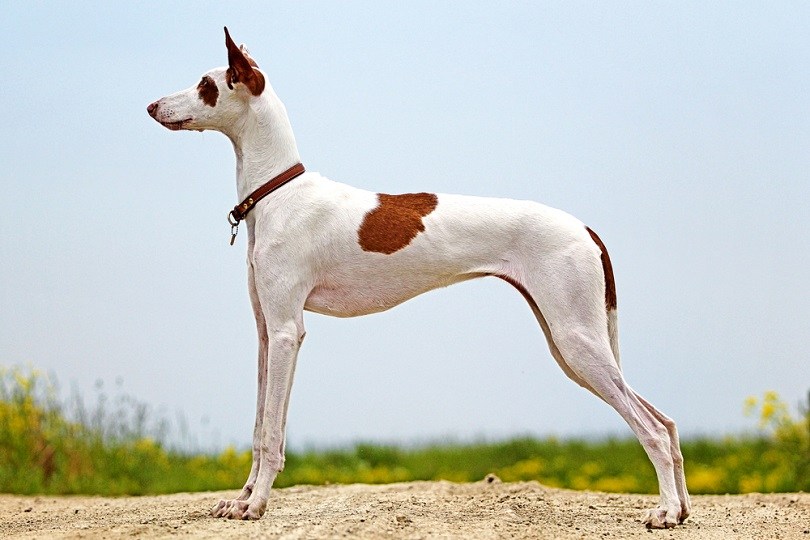
The Ibizan Hound can be seen in various Egyptian artworks and was imported into Ibiza from Egypt by traders in the 7th century BCE. They were bred as hunters and are known for their graceful appearance and agility. They stand taller than the Basenji at between 22.5 and 27.5 inches and are also heavier at between 45 and 50 pounds.
Ibizan Hounds have slim faces, pointy ears, long legs, and lean bodies, and come in four colors and color combinations—red, red and white, white, and white and red. Personality-wise, they’re typically affectionate and mild-mannered and make great family dogs.
Greyhound
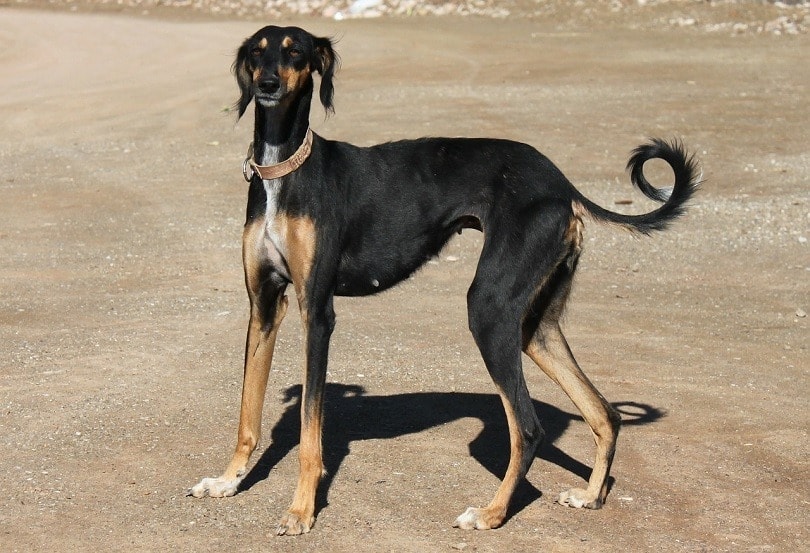
The Greyhound’s origins are somewhat murky, but these dogs have been found in Mesopotamian graves dating back to 5000 BCE. Greyhounds are characterized by their deep chests, small, arched waists, and floppy ears, and are capable of reaching exceptional speeds. Moreover, they’re much-loved for their dignified and gentle dispositions and sensitive natures.
Pharaoh Hound
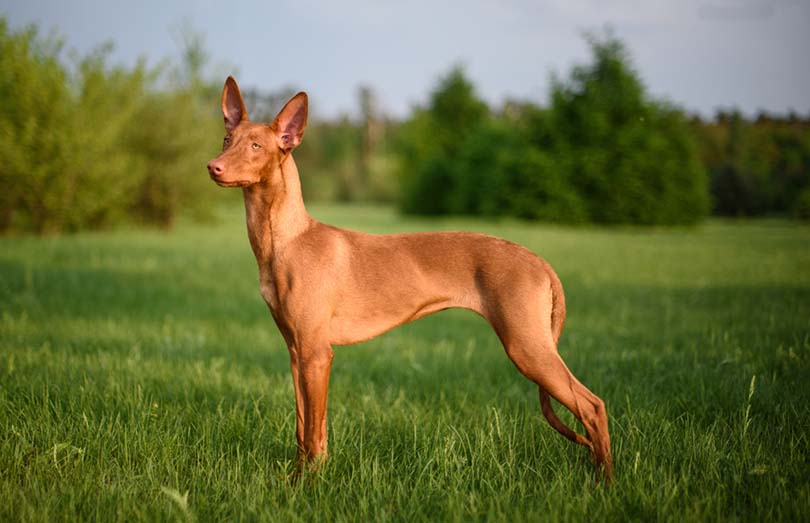
The Pharaoh Hound is thought to have been around in ancient Egypt but was later taken to Malta by traders. A dog resembling the Pharaoh Hound is on the funerary stele of Intef II and they were raised to be sacrificed to Anubis.
Another lightning-fast breed, the Pharaoh is slender with round, expressive eyes, pointed ears, and has a “smiley” expression. They also blush red when happy, so are referred to as the “blushing dog”.
Final Thoughts
To recap, the image of Anubis is often said to be based on a Basenji, but it could just as well have been based on a Greyhound, Pharaoh Hound, or Ibizan Hound. Dogs had diverse roles in ancient Egyptian society, serving as hunting dogs, guardian dogs, and sacrifice dogs, and as inspiration for many ancient works of art that continue to intrigue us today.
Featured Image Credit: Mia Stendal, Shutterstock


